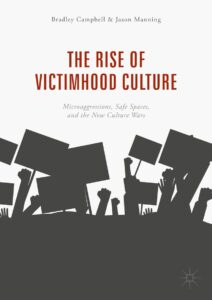Sarah sits across from me, tears streaming down her face as she recounts yet another workplace “betrayal.” Her boss passed her over for a promotion—again. Her colleagues don’t appreciate her contributions. The company culture is toxic. Everyone seems to have it out for her.
As I listen, a familiar pattern emerges. Every setback in Sarah’s life has an external cause. Every disappointment has a villain. Every failure has someone else’s fingerprints on it. Sarah has become trapped in what psychologists call a chronic victim identity—and she doesn’t even realize the bars of her own making.

The Seductive Comfort of Victimhood
Here’s the uncomfortable truth: adopting a victim identity can feel surprisingly good, at least initially. It provides immediate relief from the heavy burden of personal responsibility. It offers a ready-made explanation for life’s disappointments. Most importantly, it generates sympathy and attention from others—powerful social rewards that can become addictive.
But like many things that feel good in the moment, chronic victimhood exacts a devastating long-term price. What begins as emotional self-protection evolves into a prison of learned helplessness, where the very mindset meant to shield us from pain becomes the source of our deepest suffering.
The Neuroscience of Victimhood
Recent neuroscientific research reveals something startling about chronic victim thinking: it literally rewires your brain. When we repeatedly focus on negative experiences and external blame, we strengthen neural pathways associated with threat detection and helplessness while weakening those linked to problem-solving and resilience.
Dr. Rick Hanson, a neuropsychologist, explains this as the brain’s “negativity bias” gone haywire. Our brains are naturally wired to notice and remember threats more than positive experiences—an evolutionary survival mechanism. But in chronic victim thinking, this bias becomes pathological, creating a feedback loop where we actively seek evidence that the world is against us.
The amygdala, our brain’s alarm system, becomes hyperactive in chronic victims, constantly scanning for threats and slights. Meanwhile, the prefrontal cortex—responsible for rational thinking and emotional regulation—becomes underutilized. This neurological shift makes it increasingly difficult to see opportunities, solutions, or personal agency.
The Seven Deadly Traps of Chronic Victim Identity
1. The Responsibility Void
Perhaps the most insidious aspect of chronic victim identity is how it erodes personal responsibility. When everything bad is someone else’s fault, there’s no need for self-examination or behavior change. This creates a dangerous void where personal growth should occur.
Consider Mark, a talented software developer who was fired from three consecutive jobs. Each time, he blamed toxic management, office politics, or unrealistic expectations. He never examined his own communication style, work habits, or team collaboration skills. By the time he sought coaching, he was unemployable—not because he lacked technical skills, but because he’d never developed the self-awareness needed for professional growth.
2. The Relationship Destroyer
Chronic victim identity is relationship kryptonite. Initially, people may offer sympathy and support, but compassion fatigue sets in quickly. Friends and family members become exhausted by the constant complaints, the inability to take advice, and the drain of one-sided conversations focused entirely on grievances.
The victim mindset creates what psychologists call “emotional dumping”—using others as repositories for negative emotions without reciprocal care or interest in their lives. This pattern destroys intimacy and trust, leaving chronic victims increasingly isolated and providing more “evidence” that the world is against them.
3. The Innovation Killer
Victims don’t innovate—they ruminate. Chronic victim thinking creates a cognitive trap where mental energy is consumed by replaying past hurts rather than imagining future possibilities. This mental habit becomes so ingrained that creative problem-solving abilities atrophy.
Research from Stanford University shows that people with victim mindsets score significantly lower on measures of creativity and innovative thinking. They become so focused on what’s wrong that they lose the ability to envision what could be right.
4. The Success Saboteur
Paradoxically, chronic victims often sabotage their own success. Success would require them to abandon their victim identity, which has become central to their sense of self. Unconsciously, they may turn down opportunities, procrastinate on important projects, or create conflicts that justify their victim narrative.
This self-sabotage isn’t conscious or malicious—it’s a protective mechanism designed to maintain psychological consistency. If someone’s entire identity revolves around being powerless and persecuted, success becomes a threat to their core sense of self.
5. The Empathy Paradox
Chronic victims often believe they’re more empathetic than others because they’ve “suffered more.” However, research suggests the opposite. Constant focus on personal grievances actually reduces empathy for others’ experiences. The victim mindset creates a kind of emotional narcissism where one’s own pain becomes the center of the universe.
True empathy requires the ability to step outside one’s own experience and genuinely connect with others’ perspectives—something that chronic victim thinking actively prevents.
6. The Learning Lockdown
Every failure contains valuable information, but chronic victims are unable to extract these lessons because they’re too busy assigning blame. This creates a tragic irony: those who suffer the most setbacks learn the least from them.
The victim mindset treats every negative experience as confirmation of external persecution rather than as data for personal growth. This learning lockdown ensures that the same mistakes get repeated indefinitely.
7. The Reality Distortion Field
Perhaps most concerning, chronic victim identity creates a distorted perception of reality. Neutral interactions become hostile. Constructive feedback becomes personal attacks. Random events become targeted persecution. This reality distortion field makes it increasingly difficult to navigate the world effectively.
The Biochemical Addiction
Chronic victim thinking creates a literal biochemical addiction. Each time we focus on being wronged, our brains release stress hormones like cortisol and adrenaline, followed by endorphins to help us cope. This chemical cocktail can become addictive, creating a physiological craving for the drama and intensity of victimhood.
Dr. Gabor Maté, an expert on addiction, notes that chronic stress and trauma can create addictive patterns even when the original trauma has ended. The victim mindset becomes a way of recreating familiar biochemical states, even when they’re ultimately destructive.
The Generational Transmission
One of the most heartbreaking aspects of chronic victim identity is how it gets passed down through families. Children who grow up with chronically victimized parents learn that the world is fundamentally unsafe and that personal agency is an illusion. They internalize these beliefs and carry them into their own relationships and careers.
This generational transmission creates families trapped in cycles of learned helplessness, where each generation reinforces the victim narrative of the previous one. Breaking this cycle requires tremendous courage and self-awareness.
Reclaiming Your Power
The good news is that chronic victim identity, while deeply ingrained, is not permanent. The same neuroplasticity that allowed these patterns to form can be harnessed to create new, healthier ways of thinking and being.
Step 1: Recognition Without Shame
The first step is recognizing victim thinking patterns without shame or self-judgment. This requires brutal honesty about how we’ve been interpreting events and our role in creating our current circumstances.
Step 2: Radical Responsibility
This doesn’t mean blaming yourself for everything that’s happened to you—some things truly are beyond our control. Rather, it means taking full responsibility for your responses to what’s happened and your choices moving forward.
Step 3: Rewriting Your Story
Instead of seeing yourself as the victim of your life story, begin to see yourself as the author. This shift in perspective is transformative, moving you from passive recipient to active creator of your experience.
Step 4: Building Agency Muscles
Start small by identifying areas where you can exercise choice and control. Each time you solve a problem or influence an outcome, you strengthen your sense of personal agency.
Step 5: Cultivating Gratitude and Appreciation
Regular gratitude practice literally rewires your brain to notice positive aspects of your experience. This isn’t about toxic positivity—it’s about creating balance in your perception.
The Ripple Effect of Liberation
When someone breaks free from chronic victim identity, the transformation ripples outward in profound ways. Relationships improve dramatically as they become more reciprocal and positive. Career opportunities emerge as others are drawn to their new energy and accountability. Mental health flourishes as the constant stress of victimhood gives way to empowerment and possibility.
Most importantly, they become models for others—showing that it’s possible to acknowledge real pain and injustice while still claiming personal power and agency.
The Choice That Changes Everything
At its core, chronic victim identity is a choice—often an unconscious one, but a choice nonetheless. It’s the choice to focus on what’s been done to us rather than what we can do moving forward. It’s the choice to see ourselves as powerless rather than as powerful creators of our experience.
The moment we recognize this choice and consciously choose differently, everything begins to change. We don’t deny or minimize real trauma or injustice—we simply refuse to let it define us or limit our potential.
Your past may have shaped you, but it doesn’t have to imprison you. The key to your freedom has always been in your hands—sometimes you just need to remember where you put it.
The journey from victim to victor isn’t about denying your pain—it’s about reclaiming your power. Every step forward is an act of rebellion against the forces that would keep you small. Every choice to grow is a declaration that your future will be authored by you, not by your past.
Hey there! We hope you love our fitness programs and the products we recommend. Just so you know, Symku Blog is reader-supported. When you buy through links on our site, we may earn an affiliate commission at no extra cost to you. It helps us keep the lights on. Thanks.
Disclaimer: The information provided in this discussion is for general informational and educational purposes only. It is not intended as medical or professional advice. Only a qualified health professional can determine what practices are suitable for your individual needs and abilities.

